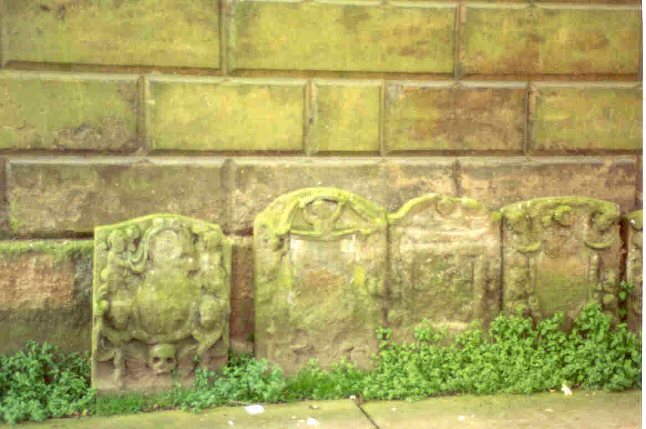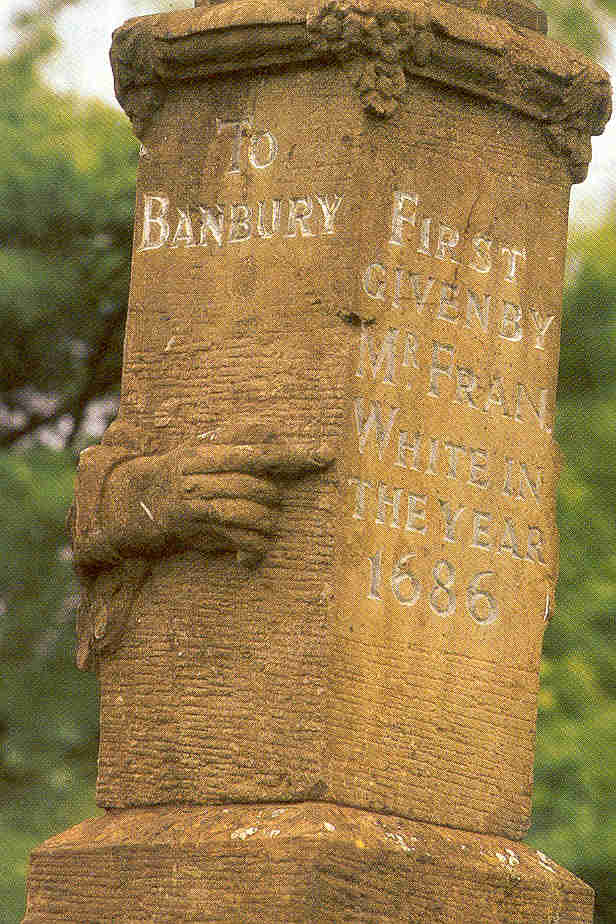Banbury

Gravestones at St. Mary's Parish Church in Banbury

An old sign (1686) to Banbury
Banbury

Gravestones at St. Mary's Parish Church in Banbury

An old sign (1686) to Banbury
From "The Markets of Banbury", British Heritage, Feb/March 2001: "Banbury is still a market town. Block after block of prosperous shops fill its pedestrian centre, and walkers jostle for room on its sidewalks. Every Thursday and Saturday the old medieval market comes to life.
Banbury started as a Saxon settlement, Baran's Borough, or Baran's palisaded village. Baran located his settlement on a hill looking down on a good ford over the River Cherwell. By the turn of the first millennium the settlement was ancient and well established, and major routes to Stratford, Northhampton, and Oxford converged at the ford. In 1070 the Normans built a substantial castle at this strategic point.
In Banbury, like every market town in those high medieval day, a cross marked the center of activity. Actually, Banbury was so successful it had several markets spread out along its lanes, and at least three crosses. Which one was the Banbury Cross of the nursery rhyme is impossible to decide, since none of them survived much past the year 1600.
Banbury's festivals included the election of a Queen of the May. This town girl, was chosen for her beauty and purity. She dressed in the finest chlothes and jewellry imaginable, with rings on her fingers and bells on her toes. She then mounted a white horse and led a grand procession through the town:
Ride a cock-horse to Banbury Cross
To see a fine lady on a white horse.
She has rings on her fingers and bells on her toes
And she shall have music wherever she goes.
Banbury has always owed much of its prosperity to the richness of its
settin. In this, modern Banbury is little changed. Tiny villages surround
it, a score or more, each made up of golden-stoned buildings with thatched
roofs, huddled around a green. Cropredy is typical."